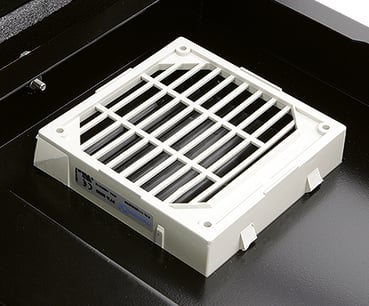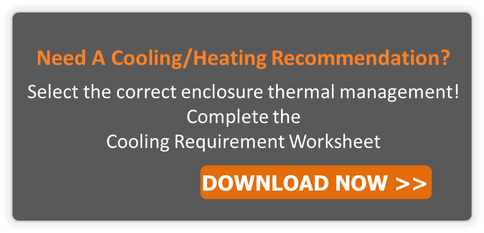In a perfect world, system integrators deploying computer enclosures in harsh, manufacturing environments would possess an excellent understanding of thermal management and its many intricacies.
In a realistic world, most users of the system know very little about the implications of subjecting electronics, concealed in a dust and dirt tight enclosure, in a warm environment. Making an informed decision - for the appropriate level of heating and cooling - will help maximize the lifetime of the electronics and reduce downtime on an assembly line. However, determining the proper thermal management does require a clear understanding of cooling parameters and knowledge of the operating environment.
According to Abderrahmane Agnaou, in his article ‘What is Thermal Management of Electrical Enclosures?’ thermal management is very important and should be well thought out, “Although there is no single “secret,” you should always plan ahead – a basic step in good management in any walk of life. Use materials best suited to the site environment and ones that naturally lend themselves to heat dissipation. Another “secret” is striking the right balance between the temperatures inside and outside your enclosure. The more heat-sensitive devices, the trickier it is to get the right balance.”
4 Tips for Configuring Enclosure Thermal Management
1. Ensure the electronics will operate well within the manufacturer’s temperature limits.
By providing enough cooling power to keep electronics in the proper operating range, you will prevent temperature related failures from occurring on the manufacturing floor. This downtime can be detrimental to deadlines and efficiency and will negatively cost the company. Maintaining electronics at the appropriate operating temperatures in an enclosure will keep them running smoothly and extend the lifetime of the products.
 2. Gather vital information through the electronics’ published data sheets.
2. Gather vital information through the electronics’ published data sheets.
At the beginning of the project, it may be difficult to estimate dissipated power outputs. Always add up the wattage of all of the electronics that will be housed inside of the enclosure. This calculation will give you a sense of what type of cooling might be needed. The ambient temperature outside of the enclosure and the anticipated temperature on the inside are always important to review. The enclosure paint color and the enclosure material can also influence the heat load. If you are unsure about temperatures and heat output, plan for the worst case scenario to ensure you have adequate heating and cooling in place.
3. Understand the material properties you want to enclose.
Just because a product’s data sheet lists a value, does not mean that the value is accurate! For example, consider the heat output listed for a UPS (Uninterrupted Power Supply). Per the published specifications, a small UPS can produce an upwards of 1,600 watts. However, the purpose of the UPS is to provide temporary battery power when the utility power is out. On average, plan for on only 25% of the wattage listed on a UPS's spec sheet. This will be adequate in determining the appropriate heating or cooling. Calculating the UPS running at the maximum capacity 24/7 is simply not realistic and will result in a much higher rated cooling device that will likely never be used to its full potential. Be sure to work with an enclosure manufacturer that has a vast knowledge of thermal management to help guide you along the process.
4. Keep the enclosure sealed as it was intended to be!
Once you have gone through the process of specifying the correct industrial enclosure and thermal management solution, do not fail to maintain an appropriate seal to the outside world. Users of computer enclosures have a tendency to improperly close doors or have the thermostat set incorrectly. Also, printer access doors, on enclosures, are often left open for “convenience.” This carelessness will result in harming the very system that you spent great lengths protecting. A continuous collaborative exchange is required between system integrators, engineers, and users of the computer enclosure to ensure that it is being utilized properly in a manufacturing environment.
Effective electronic cooling requires a decent understanding of how the electronics and enclosure system change as the temperature fluctuates (inside and out). Knowledge of how the electronics are built and their associated temperature tolerances are key to determining the overall perfect solution.
For more information, check out these blog posts:
- Using Filtered Fans to Cool Computer Enclosures
- Managing Heat Load for Computer Enclosures
- Regular Maintenance on Thermal Management is Important!
- Computer Enclosure Thermal Management: 5 Fan Cooling Tips
HAVE QUESTIONS? LET US KNOW HOW WE CAN BEST ASSIST YOU!
CONTACT AN 'ITSENCLOSURES EXPERT' AT 1-800-423-9911 -OR- SEND US AN EMAIL: INFO@ITSENCLOSURES.COM




